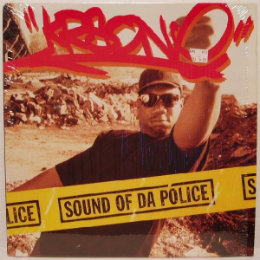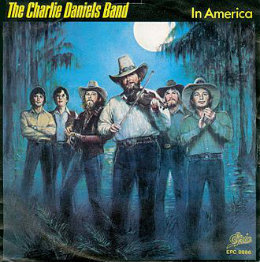Today’s Music Can Build Understanding of History
A MiddleWeb Blog

This was disheartening, of course, because when teaching about the past, it does sometimes seem like the events we teach about are far removed from the realities of the present.
Nothing said in that moment was likely to convince this student that what we were studying was relevant to her life. Developmentally, it’s hard for kids to see the connections that adults can — we have an easier time understanding cause and effect, and the universal trends in human behavior that we see evidenced in human history. Often kids will understand larger themes as unique to the context that they learned it in–unless these themes are specifically connected to current ideas.
When Jody and our fellow blogger Aaron Brock planned out the curriculum of our U.S. History class some years ago, they made sure to add music. It’s this music that can de-contextualize the history themes and allow the students to make connections tying the past to the present–to show the reverberations of an event to the present day.

Two particular pieces of music that Jody uses to make this connection are KRS-One’s Sound of da Police and Tupac’s Changes. While the themes discussed in these two songs are difficult, the language is appropriate–sometimes a challenge when selecting contemporary music to use in the classroom.
2 views of living in America
To kick off the study of the creation of the Constitution, which raises questions about who historically who has been protected by the Constitution (and who it was designed to protect), we introduce the unit with two different views of America.
Students explicate the lyrics of Charlie Daniels Band’s In America, finding the parts that present an opinion, and then discuss why the band might feel the way they do (that America is a beautiful country, both due to its landscape and its values). Then they listen to Tupac’s Changes, which, among other things, discusses police brutality, systemic poverty, and the Panther movement.
Seeing these conflicting views of America really helps our eighth graders hold two different perspectives in their mind. We ask them: “Who is right, Charlie Daniels or Tupac?” 
Sometimes our decision to open with music helps them to feel that they can talk more freely–and as a text the song lyrics are often more engaging, too. Listening to and close-reading the text of the music is great for an anticipatory set, and its effect reverberates throughout the unit. Our students will often quote the song in a discussion to connect what we were studying to the present day.
Music adds context to Civil War issues
The next song that we close-read is KRS-One’s Sound of da Police. The main theme of this song is the comparison of current law enforcement officers to the overseers on plantations of the past, framing the current system as slavery by another name.
We use this song as an anticipatory set to the Causes of the Civil War unit, again attempting to connect the past and the present. Students here discuss perspective and bias as well–what in our own experiences affects our perception of the place where we live? Of fairness? Of justice? These are all questions that arise from the music.

So while we can’t always answer the student’s question about WHY she is learning history as eloquently as we would like, we hope that some of the words of Tupac and KRS-One can help speak the rationale better than we could.
Students don’t have to agree with views expressed in any particular song, but what they cannot disagree with is that this is someone’s experience and that it is rooted in choices made by other humans of the past.
How do you use music to connect the past with the present in history class?



































In September, I saw a 9th grade teacher I am working with, use Dave Matthews Band “Don’t Drink the Water” as a way to get students to verbalize their 21st century filter so that they could talk about the Trail of Tears. It was powerful. Even after reading primary source documents and discussing them, a student still wanted to know if Andrew Jackson “knew in his heart that what he did was wrong”. Music helped them gain an understanding that Andrew Jackson didn’t live in the 21st century and contextualize so that they could put what they were learning into perspective.